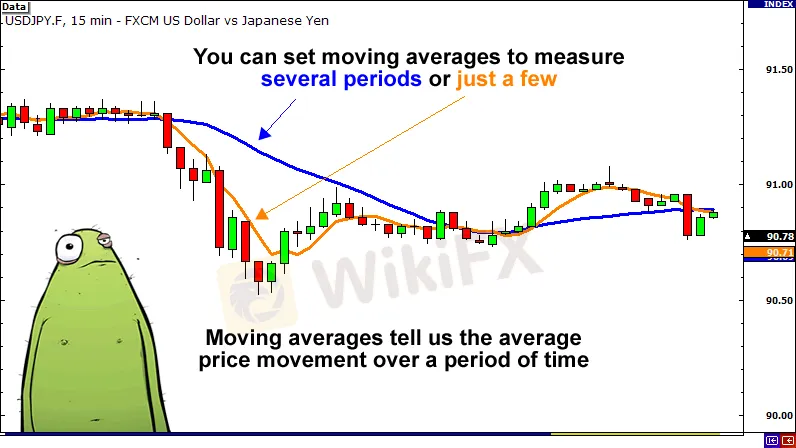简体中文
繁體中文
English
Pусский
日本語
ภาษาไทย
Tiếng Việt
Bahasa Indonesia
Español
हिन्दी
Filippiiniläinen
Français
Deutsch
Português
Türkçe
한국어
العربية
How Do You Calculate Volatility?
Abstract:Volatility is a metric that evaluates the overall price swings over a period of time and can be used to spot possible breakouts. There are a few signs that can help you determine how volatile a pair is right now.
When looking for strong breakout trade possibilities, we might look at volatility.
Volatility is a metric that evaluates the overall price swings over a period of time and can be used to spot possible breakouts.
There are a few signs that can help you determine how volatile a pair is right now.
When looking for breakout possibilities, these indications can be extremely useful.
Moving Average (MA)
Moving averages are the most commonly used indicator by forex traders, and while being a simple instrument, it gives vital data.
Simply said, moving averages track the market's average movement over a given period of time, where X can be whatever you wish.
If you added a 20 SMA to a daily chart, for example, it would show you the average movement over the previous 20 days.
There are other forms of moving averages, such as exponential and weighted, but we won't go into too much detail about them in this session.
Check out our moving averages lesson if you want to learn more about them or brush up on what you already know.

Bollinger Bands, No. 2
Because that is exactly what Bollinger Bands were designed to do, they are excellent tools for measuring volatility.
Bollinger Bands are two lines that are plotted two standard deviations above and below a moving average for an X amount of time, where X can be anything you choose.
We'd have a 20 SMA and two other lines if we set it to 20.
One line would be +2 standard deviations above it, while the other would be -2 standard deviations below it.
The contraction of the bands indicates that volatility is low.
When the bands broaden, it indicates that volatility is at an all-time high.
Check out our Bollinger Bands class for a more detailed explanation.

3. True Range Average (ATR)
The Average True Range, usually known as ATR, is the last item on the list.
Because it shows us the average trading range of the market for X length of time, where X is whatever you want it to be, the ATR is a good instrument for gauging volatility.
Essentially, ATR depicts the range of the currency pair, which is the distance between the high and low in the time frame under consideration, as a moving average.
On a daily chart, setting ATR to “20” will display the average trading range for the previous 20 days.

When the ATR decreases, it indicates that volatility is reducing.
When the ATR increases, it indicates that volatility has increased.
Always keep in mind that the ATR is a volatility indicator, not a directional one.
It's best employed as a technical indicator to corroborate the market's enthusiasm for range breakthroughs (or lack thereof).
Check out our ATR article on Forepedia to learn more about it.
Disclaimer:
The views in this article only represent the author's personal views, and do not constitute investment advice on this platform. This platform does not guarantee the accuracy, completeness and timeliness of the information in the article, and will not be liable for any loss caused by the use of or reliance on the information in the article.
Read more

Forex is a game that I enjoy playing
These champions have one thing in common: they not only work their butts off, but they also enjoy what they do.

Wait patiently. Maintain your discipline
"Patience is the key to everything," American comic Arnold H. Glasgow once quipped. The chicken is gotten by hatching the egg rather than crushing it."

There isn't a Holy Grail to be found!
Ask any Wall Street quant (the highly nerdy math and physics PhDs who build complicated algorithmic trading techniques) why there isn't a "holy grail" indicator, approach, or system that generates revenues on a regular basis.

Concentrate on the Process. Profits aren't a priority
We've designed the School of WikiFX as simple and enjoyable as possible to help you learn and comprehend the fundamental tools and best practices used by forex traders all over the world, but keep in mind that a tool or strategy is only as good as the person who uses it.
WikiFX Broker
Currency Calculator







